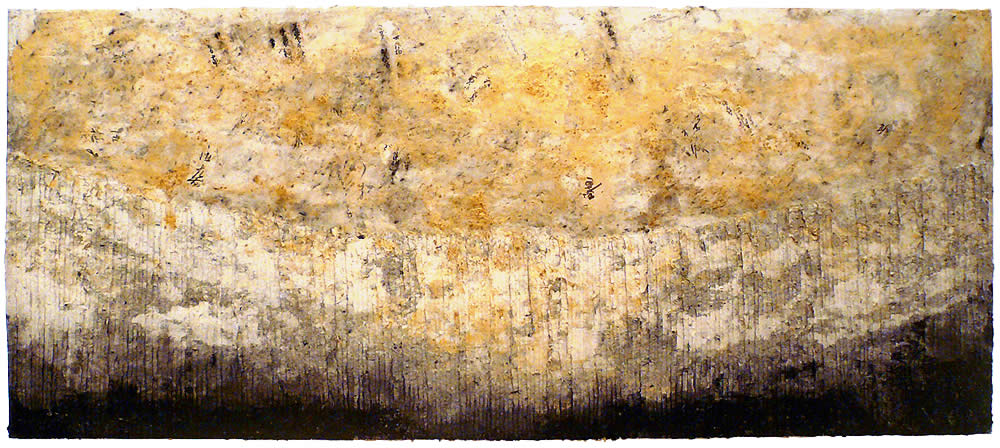Artist's Statement 1 2 3 4 | Exhibition
In the fifteenth century, the Nô dramatist Zeami Motokiyo (1363-1443) deemed yugen to be the essence of the tempo-based art of Nô and wrote brilliant scenes in literature as well as for dance, music, and the stage that elevated the space-time dimensions of yugen to a comprehensive art. Zeami transmitted his thought and works to the afterworld by binding aristocratic culture to Zen and taking yugen as a versatile ideal in its capacity to train one’s mind and craft. Although Nô drama emerged more than 100 years before the birth of Shakespeare, it is still revered as among the finest of the world’s performing arts and its influence on the contemporary stage continues.
During the more turbulent periods of Japanese history when living life was fraught with more uncertainties than it is today, art embodied universal truths and supreme beauty that surmounted feelings of the impermanence of human life. Surprisingly, today we find that we can transcend time and be moved by this same art, and while this feeling cannot be adequately expressed in words, we are afforded a glimpse of the yugen, or grace, of the world.
Accomplishing the feat of reaching the heights of the universality of art through a thorough examination of the cultural milieu of a given period is something that will long be remembered in world cultural history as a revolutionary act of a life imbued with Zen values.
When unrest came to an end in medieval Japan and peace reigned thereafter throughout the Edo period (1603-1867), the culture of washi spread to common people and prospered. Washi making declined with the introduction of production machines for western-style papermaking that enabled a high volume of paper to be supplied at low cost, and while 50,000 handmade paper shops existed at the beginning of the twentieth century, only about 400 remain today. It is a sad reality that there seems to be no way in which to avoid poor quality paper once laboring saving chemicals and machines were introduced. Until the nineteenth century, the distinctive aspects of washi worked against priorities toward economic efficiency. Today, however, a single group of master craftsmen, determined to maintain quality measured in terms of tradition as their highest priority, have continued to make washi as craft and for the purposes of cultural preservation in the unpolluted air and water of a mountain hamlet.
